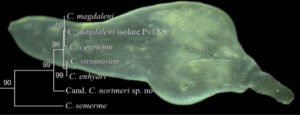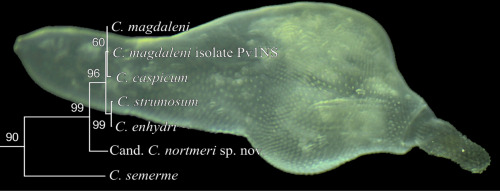Marine Mammal Parasite of the Month- August 2021
This marine mammal parasite is a part of the acanthocephalan family but only has one species for a primary host, the sea otter. This parasite is found in sea otters of all ages, the youngest being 1 month old. Since sea otters are introduced to solid food at around 3 weeks of age by their mother, it is thought that the parasite likely comes from a food source of theirs. This makes this parasite very common, and in a study done it was shown to be 100% present in adults and 50% present in pups. Once this parasite has infected the sea otter, it mostly stays in the small intestines. Little is known about the life cycle of this parasite however it is though to be pathologically insignificant because it does not cause any major damage to the otter. Major damage is usually classified by an inflammatory response or peritonitis (redness and swelling of the abdomen). As is with all parasites, a heavy load will cause emaciation and lethargy. The only knowledge of the life cycle of this parasite is that sea otters are their definite hosts, and that they likely have intermediate hosts in the prey of sea otters: clams, oysters, and other bivalve mollusks, because this is how the otters are speculated to be infected. Diagnosis would have to be either through fecal matter (which is how we diagnose our patients here at NMLC!) or through necropsy findings. Once infected with this parasite, sea otters do not show any symptoms. Treatment for this parasite in sea otters is best if injected into food or directly into the animal. Otters have a keen sense of smell and taste so oral medications can be tricky to administer because the animal may reject them. What do you think this parasite is??

Posted by summer intern Abby C.

